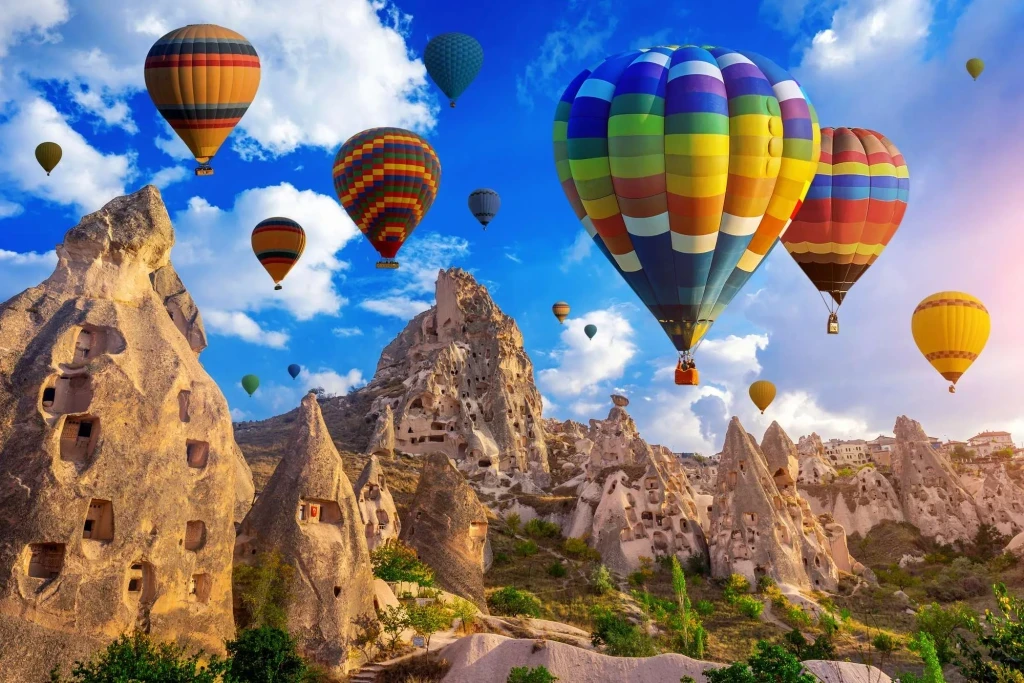Cappadocia is one of Turkey's most fascinating and historic regions. The soft volcanic rocks have been carved by the people of the region for centuries, creating homes, monasteries, and churches. These churches are important religious buildings from the early Christian period.
History
Cappadocia is an important center in Christian history. During the Roman Empire, Christians hid in the isolated valleys of Cappadocia to practice their faith freely. From the 4th century onwards, many monasteries and churches were built. These churches were used as secret places of worship during times when Christianity was forbidden. The cave churches continued to develop during the Byzantine Empire and were decorated with beautiful frescoes.
Important Cave Churches
Göreme Open Air Museum
Göreme Open Air Museum is one of the most well-known and visited places in Cappadocia. It has several cave churches and chapels.
St. Basil Chapel: Built in the 11th century, this chapel has beautiful examples of Byzantine art. The frescoes show the life of Saint Basil and Christian iconography.
St. Barbara Church: Named after Saint Barbara, this church has impressive frescoes from the Byzantine period.
Elmali Church: This 9th-century church has frescoes showing different stages of Jesus's life. It is named "Elmali" because of the apple figures on its dome.
Snake Church: Named after the snakes seen in its frescoes, this church depicts scenes from the lives of Christian saints.
Tokali Church
Tokali Church is one of the largest and most impressive cave churches in Cappadocia. It has four sections: the Old Church, the New Church, the Chapel of St. Basil, and the Chapel of St. Nicholas. The frescoes inside tell the story of Jesus from his birth to his crucifixion.
Dark Church
The Dark Church is named because very little light enters the interior, which has helped preserve its frescoes. The frescoes depict scenes from the Bible and Christian iconography. The frescoes of this church represent the peak of Byzantine art in the 11th century.
Çavuşin Church (St. John Church)
Located in Çavuşin village, this church was built in the 5th century and is one of the oldest churches in the region. The interior is covered with frescoes depicting important scenes and figures from Christian history. This church, dedicated to St. John, shows the religious and historical importance of Cappadocia.
St. Nicholas Church (Gülşehir)
Built in the 10th century, this church in Gülşehir is dedicated to St. Nicholas. The frescoes inside depict scenes from the life and miracles of St. Nicholas, showcasing the artistry of the Byzantine period.
Architectural and Artistic Features of Cave Churches
Cave churches usually have three parts: the apse (a semicircular recess), the naos (main hall), and the narthex (entrance). The interiors are decorated with frescoes. The colors, pigments, and techniques used in these frescoes reflect the art and religious symbolism of the time. Scenes from the lives of Jesus, the Virgin Mary, and saints are often depicted.
The iconography used in the frescoes tells the story of Christianity and scenes from the Bible. These frescoes are not only religious artworks but also provide insights into the social and cultural life of the time.
Cappadocia's cave churches offer visitors a historical and spiritual experience, showcasing a blend of nature and human creativity. These structures provide a unique opportunity to explore the depths of history and Christian heritage.
